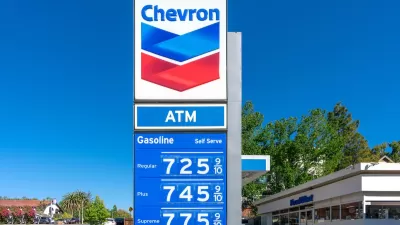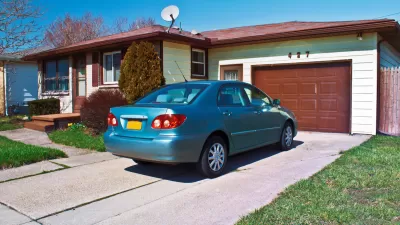The love affair between Americans and their cars is a well known trope. But according to a new paper from the Carnegie Endowment for International Peace on worldwide car usage, America's car ownership rate is among the lowest in the developed world.
Max Fisher discusses the data reported in a newly published Carnegie Endowment paper, which upends traditional ideas about car usage. It turns out that car ownership rates are higher in nearly every Western European country than in the United States. "The U.S. is ranked 25th in world by number of passenger cars per person,
just above Ireland and just below Bahrain," observes Fisher. "There are 439 cars here for
every thousand Americans, meaning a little more than two people for
every car."
So what explains this state of affairs? "The Carnegie paper explains that car ownership rates are closely tied to
the size of the middle class," explains Fisher. "In fact, the paper [titled "In Search of the Global Middle Class: A New Index"] actually measures car
ownership rates for the specific purpose of using that number to predict
middle class size."
So does the data indicate that the US has a disproportionately small middle class? Fisher isn't convinced: "Still, it's also possible that the answer has less to do with
Americans adhering to Carnegie's thesis about car ownership predicting
middle class size and more to do with other, particularly American
factors. Young Americans are spending less of their money on cars, as
Jordan Weissmann explained, as they get driver's licences at lower rates and spend more of their money on, say, high-tech smart phones."
FULL STORY: It's Official: Western Europeans Have More Cars Per Person Than Americans

Trump Administration Could Effectively End Housing Voucher Program
Federal officials are eyeing major cuts to the Section 8 program that helps millions of low-income households pay rent.

Planetizen Federal Action Tracker
A weekly monitor of how Trump’s orders and actions are impacting planners and planning in America.

The 120 Year Old Tiny Home Villages That Sheltered San Francisco’s Earthquake Refugees
More than a century ago, San Francisco mobilized to house thousands of residents displaced by the 1906 earthquake. Could their strategy offer a model for the present?

HSR Reaches Key Settlement in Northern California City
The state’s high-speed rail authority reached an agreement with Millbrae, a key city on the train’s proposed route to San Francisco.

Washington State Legislature Passes Parking Reform Bill
A bill that would limit parking requirements for new developments is headed to the governor’s desk.

Missouri Law Would Ban Protections for Housing Voucher Users
A state law seeks to overturn source-of-income discrimination bans passed by several Missouri cities.
Urban Design for Planners 1: Software Tools
This six-course series explores essential urban design concepts using open source software and equips planners with the tools they need to participate fully in the urban design process.
Planning for Universal Design
Learn the tools for implementing Universal Design in planning regulations.
Ada County Highway District
Clanton & Associates, Inc.
Jessamine County Fiscal Court
Institute for Housing and Urban Development Studies (IHS)
City of Grandview
Harvard GSD Executive Education
Toledo-Lucas County Plan Commissions
Salt Lake City
NYU Wagner Graduate School of Public Service





























